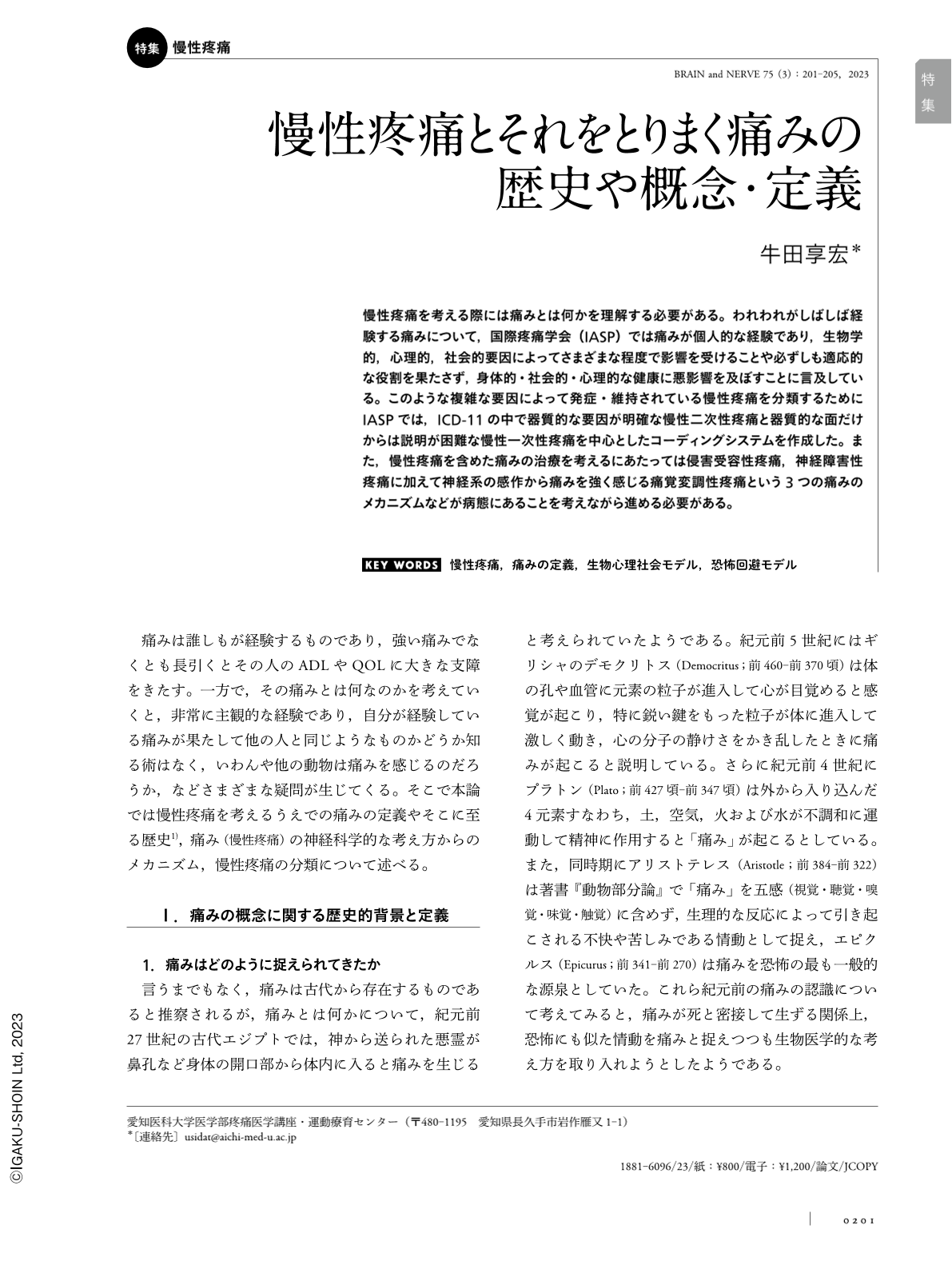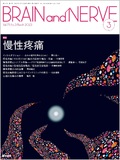Japanese
English
- 有料閲覧
- Abstract 文献概要
- 1ページ目 Look Inside
- 参考文献 Reference
慢性疼痛を考える際には痛みとは何かを理解する必要がある。われわれがしばしば経験する痛みについて,国際疼痛学会(IASP)では痛みが個人的な経験であり,生物学的,心理的,社会的要因によってさまざまな程度で影響を受けることや必ずしも適応的な役割を果たさず,身体的・社会的・心理的な健康に悪影響を及ぼすことに言及している。このような複雑な要因によって発症・維持されている慢性疼痛を分類するためにIASPでは,ICD-11の中で器質的な要因が明確な慢性二次性疼痛と器質的な面だけからは説明が困難な慢性一次性疼痛を中心としたコーディングシステムを作成した。また,慢性疼痛を含めた痛みの治療を考えるにあたっては侵害受容性疼痛,神経障害性疼痛に加えて神経系の感作から痛みを強く感じる痛覚変調性疼痛という3つの痛みのメカニズムなどが病態にあることを考えながら進める必要がある。
Abstract
Understanding what pain is necessary to understand the pathomechanisms of chronic pain. The International Association for the Study of Pain (IASP) defines pain as “An unpleasant sensory and emotional experience associated with, or resembling that associated with, actual or potential tissue damage” and its further states that pain is a personal experience, influenced to varying degrees by biological, psychological, and social factors. It also mentions that person learn the concept of the pain through life experiences, and that it does not always play an adaptive role and has a negative impact on our physical, social, and psychological health. In order to classify chronic pain, IASP created a coding system in ICD11 that focuses on chronic secondary pain, which has clear organic factors, and chronic primary pain, which is difficult to explain from the organic aspect alone. When considering pain treatment, it is necessary to consider three pain mechanisms, including nociceptive pain, neuropathic pain, and nociplastic pain, which is a condition in which the patient feels strong pain due to sensitization of the nervous system.

Copyright © 2023, Igaku-Shoin Ltd. All rights reserved.


